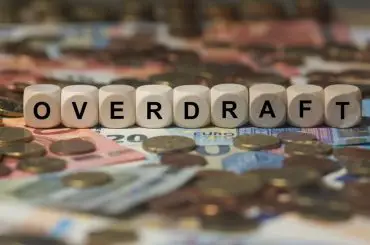Information presented on this web page is intended for informational and educational purposes only and is not meant to be taken as legal, financial, investment or tax advice. We do not accept any responsibility for any trading or investment related losses. Please review our disclaimer on before taking action based upon anything you read or see.
Bank transactions document the movement of money into and out of your bank account.
Your bank account will experience transactions when you have to make payments for business-related expenses, such as office space rent. Your asset, capital, and liability accounts are all created as a result of bank transactions.
When you use your credit or debit card to make a purchase, such as online (where all three types of transactions are typically found), the amount of money must first be authorized for the vendor to execute the transaction.
That indicates that the card is legitimate and that you authorized the bank to use your card to make purchases even when you are not present in the fine print of the paperwork that accompanied your card. No money is deducted from your account when a transaction is just authorized.
Once the transaction has been authorized, and the bank has reviewed its details, it is marked as pending. No money is deducted from your account or charged to a credit card. Before the bank conducts the transaction, certain conditions between the bank and the merchant need to be met.
Once the bank and seller have verified the important details, the amount will be deducted from your bank account or charged to your credit card. That “Posted” status denotes that everything has been done and is complete.
Difference Between Pending, Authorized, and Posted Transactions in a Bank Account
| No. | Headings | Pending transaction | Posted transaction | Authorized transaction |
| 1. | Definition | Pending indicates that the merchant has not yet posted the transaction. | Posting denotes that the merchant has requested payment from the issuing bank. | Authorized signifies that the ‘transaction is valid. |
| 2. | Time duration | A transaction may be in the pending condition for 3 to 5 business days on average. This can be up to 31 days for pre-authorizations (such as security deposits for hotels or automobile rentals). | The account balance is updated as soon as a transaction is posted. In the posted transaction, the bank has transferred the money from your account and written up the other party’s account in the amount you paid. | The main facilitator in an electronic transaction is the merchant’s bank, which receives the credit card information from the payment system when it is swiped. The authorization is finished once the merchant bank collaborates with the payment processor to get in touch with the cardholder’s financial institution and confirm that the cardholder has enough money in their account to cover the charge. |
| 3. | Example | For instance, if you use a debit card or credit card to make a purchase, your account will nearly always show that transaction as pending when you access it online or in a mobile banking app. This is because the business that accepted your debit or credit card ran an online check to confirm the card’s validity and the availability of funds before processing your order. In that case, the purchase is approved and a hold for that sum is put on your account. During the one to three business days, it takes the merchant to transmit their file to the bank to receive payment, these transactions are recorded as pending. | It’s critical to understand the order in which your bank deducts funds from your account. (For instance, are items processed based on the date and time you made the transaction, or are they first grouped by the type of transaction and then processed based on when the bank received that transaction?) Overdrafts and fees are incurred by how goods are posted. It’s crucial to know how your institution operates because some universities may post many times throughout the day or post in real-time. Transactions that were previously considered “pending” but are now available for settlement (payment) will become “posted” during posting. | As a result of assaults using malware, phishing, password or session hijacking, CSRF, XSS, etc., transaction authorization is introduced to prevent unauthorized wire transfers. Unfortunately, this precaution can be implemented incorrectly, just like any other piece of code, and as a result, this safety measure may be circumvented. |
| 4. | Process | All you have to do as a consumer is verify that the payment is what you expected. If this is the case, just let it take its course; your bank will eventually credit the merchant. The merchant and/or your bank should be contacted if you don’t recognize the payment to find a solution. | The process of applying transactions—both debits and credits—to your account balance is known as a transaction posting order. If you don’t have enough money in your account to cover all of the transactions you start, posting an order is crucial. The order can impact how many transactions overdraw your account, are returned as unpaid, and how many fees you might be required to pay. Your account may receive transactions in “real-time” or in “batch” (many transactions uploaded simultaneously at the end of the business day) (transactions posted as they are made). | An essential step in authorizing the transaction is receiving the issuing bank’s approval. The processor notifies the merchant bank, which authorizes the charge after the issuing bank has given its approval. The last party to participate in the transaction is the merchant bank. |
| 5. | Steps | If you’ve ever used a credit card or debit card to make a purchase, you’ve noticed a pending transaction on your account. | The following order in which transactions are posted: Your account is updated first with credits.Second, debits were posted to your account. Checks post by dollar amount in ascending order within the group mentioned for that type of Debit Item, whereas debit card transactions are reported chronologically or when our records indicate the transaction was made.Last to be posted to your account are fees. Most fees are posted the day they are paid. From lowest to highest in terms of dollar amount, fees are posted. | Typically, transaction authorization is carried out in some steps, such as: The transaction data is entered by the user.The user asks for permission.An authorization mechanism is set up by the application.The user checks and approves the transactional data.The user replies with the credentials for permission.The application performs a transaction after verifying authorization. |
| 6. | Remarks | An authorized debit or credit transaction that has not yet been fully processed is a pending transaction. A transaction may be in the pending condition for 3 to 5 business days on average. This can be up to 31 days for pre-authorizations (such as security deposits for hotels or automobile rentals). The value of the pending transaction is subtracted from the “available funds” during this period, but the “account balance” is left unchanged. | A debit or credit that has been fully processed is referred to as a posted transaction. The account balance is updated as soon as a transaction is posted. In the posted transaction, the bank has transferred the money from your account and written up the other party’s account in the amount you paid. | A debit or credit card purchase that has been approved by the bank that issued the customer’s payment card is referred to as an authorized transaction. The main facilitator in an electronic transaction is the merchant’s bank, which receives the credit card information from the payment system when it is swiped. The authorization is finished once the merchant bank collaborates with the payment processor to get in touch with the cardholder’s financial institution and confirm that the cardholder has enough money in their account to cover the charge. |
How Credit Card Payments and Transactions Processed

Customer purchase
A customer purchases from a merchant using their card. The validity of the card and the availability of sufficient money are checked online.
Payment processor
The merchant sends your payment to the payment processor.
Payment gateway
Before purchase, users’ payment information gets verified. The gateway processes an authorization request before resending it to the originating bank.
Authorization
The issuing bank confirms or denies the request and informs the gateway of its decision.
Merchants bank
The issuing bank then transfers funds into the merchant’s account.
Transactions
When acknowledged is received, the transactions get updated, and the amount is updated.
Authorized transactions
If the transaction is approved, the merchants send the ledger of the authorized transactions.
Ledges
The ledger sends the transaction details to the matching card network for it to communicate information with issuing bank
Pending transactions
When the customer’s bank approves the transaction, the money is taken out of their available balance. The account now displays the transaction as “pending.”
The merchant provides the bank with a copy of their transaction file, including the final settlement amounts.
Posted transactions
Finally, the bank transfers the client funds to the retailer, marking the transaction as “posted” (and the pending transaction is deleted). The transaction amount is also posted to the customer’s account balance.
Expert Opinion
When you use your credit or debit card to make a purchase, such as online (where all three types of transactions are typically found), the amount of money must first be authorized for the vendor to execute the transaction.
That indicates that the card is legitimate and that you authorized the bank to use your card to make purchases even when you are not present in the fine print of the paperwork that accompanied your card. No money is deducted from your account when a transaction is just authorized.
Once the transaction has been authorized, and the bank has reviewed its details, it is marked as pending. No money is deducted from your account or charged to a credit card. Before the bank conducts the transaction, certain conditions must be met between the bank and the merchant.
Once the bank and the store have double-checked all the details. The funds will either be debited from your bank account or put on your credit card statement. That “Posted” status denotes that everything has been done and is complete. This is the entire process for transactions in banks.
Because banks handle large numbers of account transactions, including ACH, internal, informational, debit card, checks, and more, some are almost instantly posted, while others arrive in batches just overnight. Other holds on things could exist. After each day’s processing, banks formally determine overdrafts.




